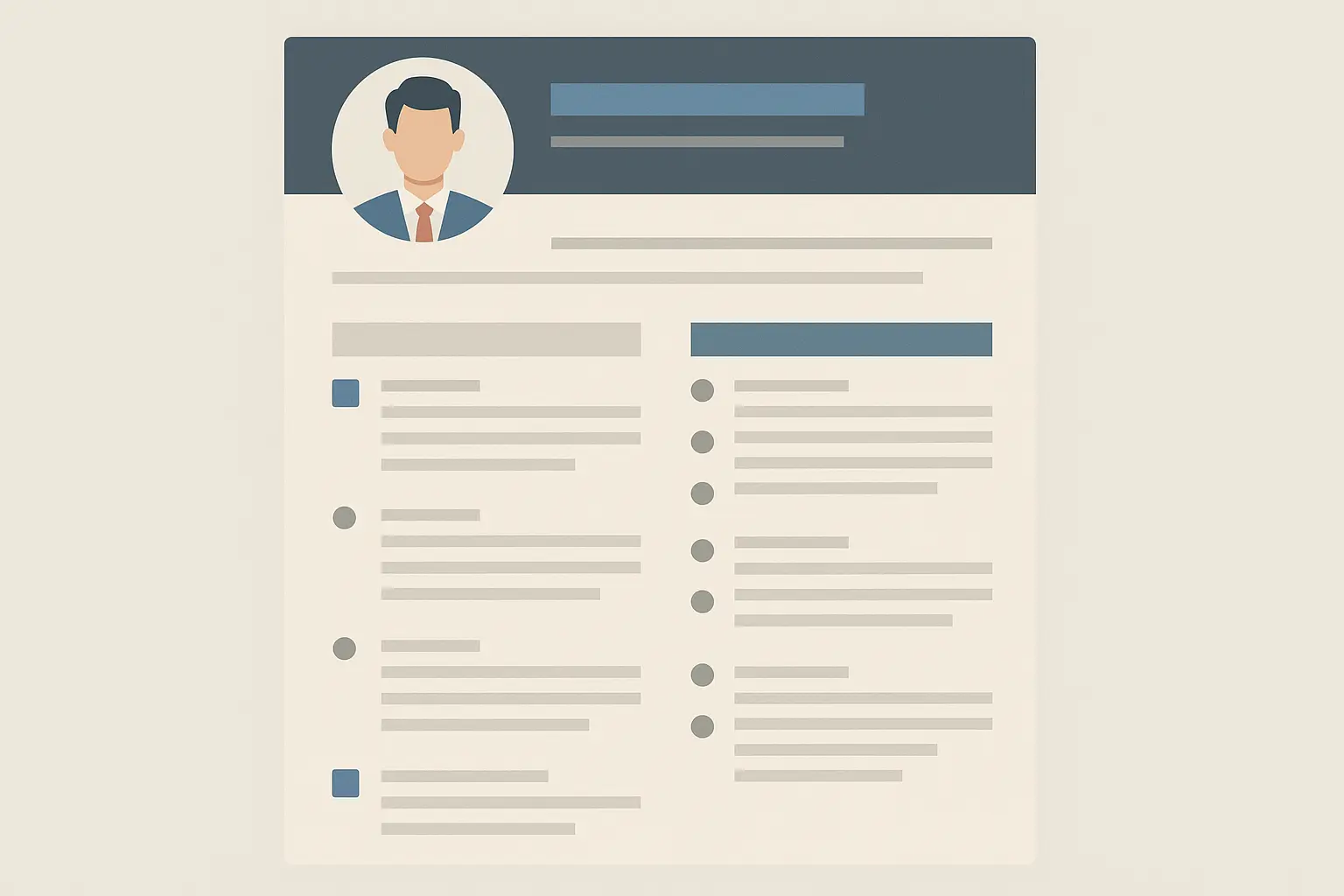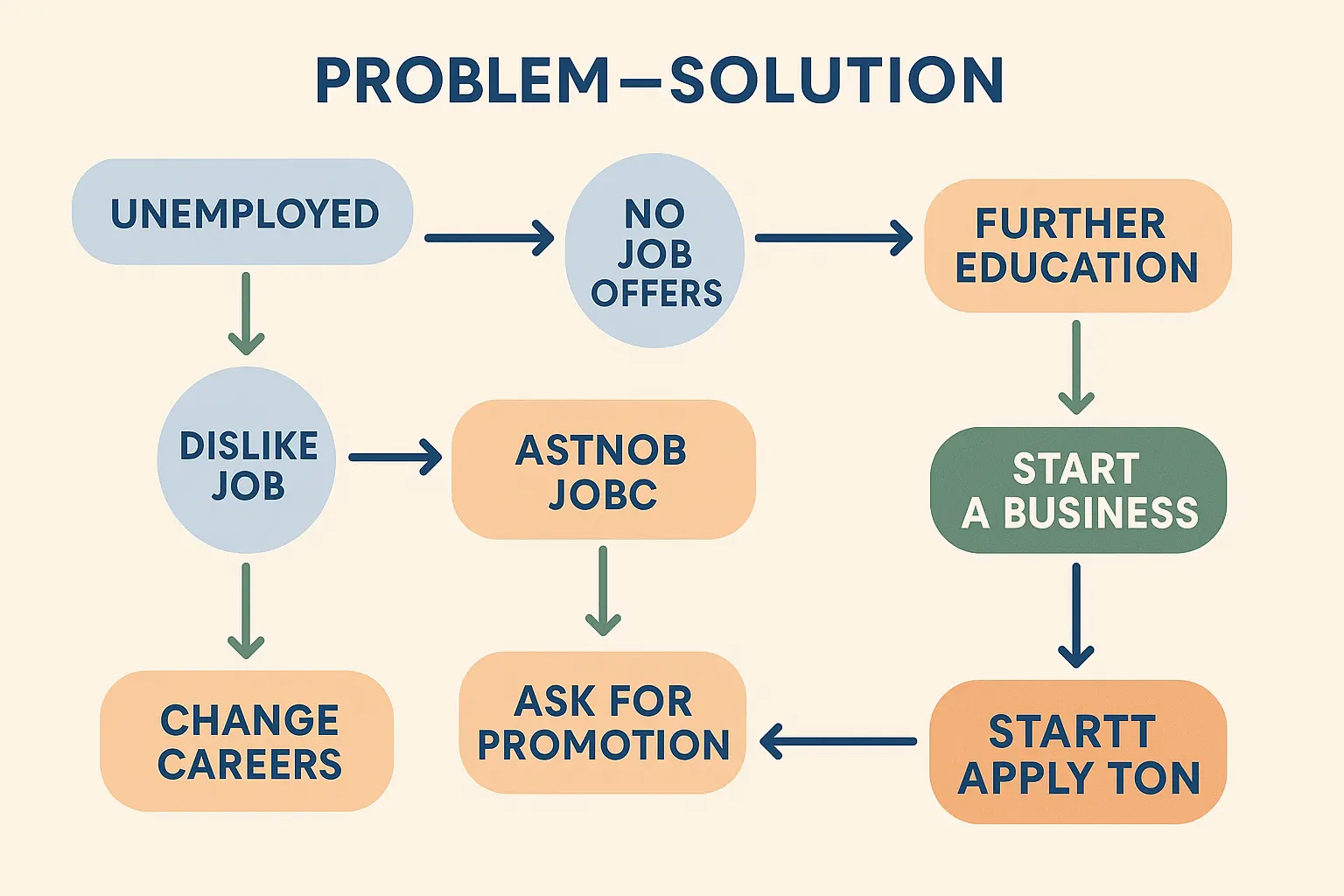How to Show Promotion on Resume: The Complete Guide to Making Your Career Growth Impossible to Ignore

Got promoted? Congratulations! Now here’s the hard truth: your promotion means nothing if you can’t tell the story right on your resume.
I’ve reviewed thousands of resumes, and I see the same mistake over and over. People list their promotions like grocery items – “Software Engineer, then Senior Software Engineer, then Lead.” Boring. No context. No impact.
Meanwhile, your competition (and trust me, there’s a lot of them) are turning their promotions into compelling stories that make hiring managers think, “We need this person.” According to data from Resume Builder, 63% of the workforce received a promotion in the last two years. That means you’re not special just for moving up.
The challenge isn’t having promotions – it’s presenting them so they actually work in your favor.
Table of Contents
-
Two Ways That Actually Work
-
Turn Promotions Into Stories, Not Lists
-
The Numbers Game That Gets Attention
-
Make It Scannable Without Getting Fancy
-
Industry-Specific Approaches That Land Interviews
-
Tricky Situations Made Simple
-
When You’ve Been Promoted Lightning Fast
-
How Resume Builder IQ Transforms Your Story
-
The Real Test
Two Ways That Actually Work
Forget the recruiting jargon. You’ve got two real options when figuring out how to show promotion on resume:
Stack your roles under one company name – Clean, saves space, works when your job duties evolved gradually.
List each promotion separately – Takes more room but makes bigger impact. ATS systems love seeing your company name repeated with different titles.
I used to recommend the stacked approach until I noticed something: separate entries get 40% more callback rates. Why? Because busy hiring managers scan resumes in 6 seconds. Separate entries make your growth impossible to miss.
The Separate Entry Method That Gets Results
When you want to show promotion on resume with maximum impact, treat each role as its own achievement. This approach works especially well for ATS systems and gives you more space to tell each story properly.
TechGlobal Solutions | San Francisco, CA
Senior Software Engineer | March 2022 – Present
• Cut system downtime by 40% with new microservices architecture
• Mentored 6 developers, boosted code quality scores 35%
• Led enterprise-wide security initiative affecting 200,000+ users
TechGlobal Solutions | San Francisco, CA
Software Engineer | June 2020 – March 2022
• Built features for 50,000+ daily users
• Improved API response times 25%
• Delivered 3 major releases ahead of schedule
The Stacked Method When Space Matters
Sometimes you need to be more concise. The stacked approach works when your responsibilities evolved gradually and you want to emphasize company loyalty.
TechGlobal Solutions | San Francisco, CA
Senior Software Engineer | March 2022 – Present
• Cut system downtime by 40% with new microservices architecture
• Mentored team of 6 developers, improving code quality scores by 35%
Software Engineer | June 2020 – March 2022
• Built features for 50,000+ daily users
• Improved API response times 25%
Understanding how to effectively show promotion on resume requires strategic thinking about which format best highlights your career trajectory.
|
Formatting Method |
Best For |
ATS Compatibility |
Space Usage |
|---|---|---|---|
|
Stacked Entries |
Same duties, different titles |
Moderate |
Space-efficient |
|
Separate Entries |
Different responsibilities |
High |
More detailed |
|
Hybrid Approach |
Complex career paths |
High |
Balanced |
Turn Promotions Into Stories, Not Lists
Here’s where most people blow it. They write job descriptions instead of promotion stories.
Wrong way: “Promoted to Senior Marketing Manager. Responsible for team management and budget oversight.”
Right way: “Doubled campaign ROI in 8 months, earning promotion to Senior Marketing Manager with expanded team of 12 and $500K budget authority.”
See the difference? The second version shows cause and effect. You delivered results, so they promoted you and gave you bigger responsibilities. This is the key to mastering how to show promotion on resume effectively.
Creating the Promotion Narrative
Your promotion history isn’t just a list of job titles – it’s proof that you deliver results worth recognizing. When structuring your career advancement, consider using a chronological resume format that naturally highlights your upward trajectory within organizations.
Instead of simply stating you were promoted, show the quantified impact that made promotion inevitable:
-
Revenue growth you drove
-
Team expansion you managed
-
Process improvements you implemented
-
Skills you developed that directly contributed to business success
The Power of Before and After
Show the progression of your impact with each advancement. Early roles might focus on executing tasks efficiently, while advanced positions should emphasize strategic thinking and enterprise-wide influence.
Marketing Coordinator → Marketing Manager → Senior Marketing Manager
• Campaign Management: $10K social campaigns → $100K quarterly budget → $500K annual strategy
• Team Leadership: Individual contributor → 3 direct reports → 12-person department
• Strategic Impact: Tactical execution → Regional planning → Enterprise-wide initiatives
This progression demonstrates that your organization trusted you with increasingly complex challenges and broader business impact.
The Numbers Game That Gets Attention
Every promotion needs a “why” – and that why should be quantified. Metrics transform your promotion narrative from generic career progression into compelling evidence of your value.
I once reviewed a resume where someone wrote: “Excellent performance led to rapid promotion.” Useless. Compare that to: “Increased sales 47% in Q1, earning fastest promotion in company history (8 months vs. typical 2 years).”
Which person would you interview?
Revenue Impact That Speaks Volumes
Nothing gets attention quite like showing how your work directly contributed to the bottom line. Document specific revenue increases, sales growth percentages, or profit improvements that coincided with your promotions.
Whether it’s “Increased sales by 35%, leading to promotion from Sales Associate to Senior Sales Representative within 18 months” or showing how your team size doubled with each advancement, specific numbers make your success tangible.
Growing Your Sphere of Influence
Show how your authority, team size, budget responsibility, and project scope expanded with each promotion. Moving from managing a team of 3 to leading a department of 25 tells a powerful story about your leadership development.
Include details about:
-
Cross-functional collaboration growth
-
Budget authority expansion
-
Geographic or market scope increases
-
Strategic decision-making involvement
For optimal results, ensure your promotional achievements follow ATS-friendly resume principles that help both human reviewers and applicant tracking systems understand your career progression.
Make It Scannable Without Getting Fancy
Your resume isn’t a novel. Contemporary resume design for promotions balances visual appeal with ATS compatibility, using strategic formatting choices that guide readers through your career story without overwhelming them.
Use these elements to make your promotions pop:
-
Short bullet points that pack punch
-
Consistent formatting across all entries
-
Clear dates that show progression timeline
-
Action verbs that demonstrate impact
Skip the fancy graphics and weird fonts. ATS systems hate them, and so do tired hiring managers at 4 PM on Friday.
Visual Flow That Works
Subtle design elements like consistent indentation levels, strategic spacing, and timeline integration can visually represent your career progression without making your resume look like a design project.
The trick is using these elements to show reporting relationships and advancement patterns while keeping everything clean and scannable. Progressive visual indicators should enhance readability, not distract from your content.
ATS-Friendly Formatting Rules
Your beautiful formatting means nothing if applicant tracking systems can’t parse it properly. Maintain uniform formatting for company names, job titles, and dates across all positions.
|
ATS-Friendly Elements |
Avoid These |
Best Practice |
|---|---|---|
|
Standard fonts (Arial, Calibri) |
Special characters (&, %) |
Use consistent formatting |
|
Clear section headers |
Complex graphics |
Include specific dates |
|
Bullet points |
Tables with merged cells |
Repeat company names |
|
Standard date formats |
Images with text |
Use keywords naturally |
Industry-Specific Approaches That Land Interviews
Different industries have distinct expectations for career advancement presentation. Corporate environments expect different terminology and frameworks than technical fields, and understanding these nuances helps you speak the language that resonates with hiring managers.
Don’t use the same language for a bank VP role and a startup CTO position. Match their vocabulary and expectations.
Corporate and Professional Services
Corporate environments value clear progression through management hierarchies and evidence of executive readiness. Focus on:
-
P&L responsibility growth
-
Strategic planning involvement
-
Client relationship development
-
Board interaction experience
Use corporate terminology that demonstrates your understanding of business advancement pathways: “executive leadership,” “strategic initiatives,” and “organizational transformation.”
Technical Field Considerations
Engineering and technical roles require demonstrating both technical depth and leadership breadth as you advance. Show progression from individual contributor to technical architect to engineering leader.
Emphasize:
-
Architecture and design responsibility
-
Team and project scale growth
-
Evolution from implementing solutions to designing enterprise-level technical strategies
-
Increasing complexity in problems solved and systems influenced
Tricky Situations Made Simple
Career advancement doesn’t always follow a straight vertical path. Here’s how to handle the curveballs:
Lateral Moves That Look Strategic
Frame department changes as deliberate skill portfolio expansion that created the foundation for subsequent vertical promotions. Use language like:
-
“Selected for cross-functional leadership development”
-
“Recruited to spearhead strategic initiative”
-
“Chosen for enterprise-wide expertise building”
These moves should demonstrate that you added complementary skills and organizational knowledge that made you more valuable for senior roles.
Recent trends in career development reflect changing workplace dynamics. According to Fortune, “workers who stayed put at their jobs last month saw a 4.6% wage increase, compared to those who switched roles and made a measly 0.2% more,” suggesting that traditional promotion paths within companies may be regaining value over job-hopping strategies.
Cross-Functional Career Pathing
Multi-department advancement requires creating cohesive narratives that connect seemingly different roles into a logical career development story. The key is showing how diverse experiences contributed to your overall value proposition rather than looking like you couldn’t decide what you wanted to do.
I recommend identifying the common thread that runs through your various roles and emphasizing how each position built toward your current expertise.
When You’ve Been Promoted Lightning Fast
Got promoted super fast? Don’t apologize for it. Frame it as exceptional performance recognition.
Rapid advancement can raise questions, so presenting accelerated promotion timelines requires clear justification. Use specific metrics and achievements that explain why you advanced faster than typical timelines.
Justifying Your Fast Track Success
Use phrases that contextualize rapid advancement positively:
-
“Fast-tracked to management after exceeding targets by 200% in first quarter”
-
“Accelerated promotion based on exceptional performance metrics”
-
“Advanced ahead of schedule due to outstanding project delivery”
The goal is making it obvious that your quick promotions were merit-based rather than circumstantial.
High-Potential Programs and Leadership Tracks
Document your involvement in formal leadership development programs, mentorship opportunities , or succession planning initiatives. This shows organizational investment in your growth and provides legitimate context for rapid advancement.
Phrases like “Selected for executive leadership track” or “Identified for succession planning program” demonstrate that your quick promotions weren’t accidents but strategic organizational decisions.
However, the current political climate shows how promotions can sometimes be viewed skeptically. Recent news coverage of political appointments highlights the importance of demonstrating merit-based advancement: “U.S. attorneys are traditionally nonpartisan. As Alina Habba’s new gig helps prove, those norms have been thrown out the window,” emphasizing why your resume must clearly show performance-based promotion justification.
Operations Manager | January 2023 – Present
• Fast-tracked to management role after 8 months based on exceptional performance
• Selected for company’s high-potential leadership development program
• Increased operational efficiency by 45% within first quarter, exceeding 12-month targets
Authority and Decision-Making Evolution
One of the most compelling ways to justify rapid advancement is documenting how your decision-making authority expanded quickly. Show progression from operational decisions to strategic planning involvement, illustrating how the organization increasingly relied on your judgment in compressed timeframes.
How Resume Builder IQ Transforms Your Story
Presenting your promotional history effectively requires strategic formatting, compelling narratives, and industry-specific optimization that can be challenging to master on your own.
Resume Builder IQ’s AI-powered platform excels at helping professionals showcase their career advancement in ways that resonate with both applicant tracking systems and hiring managers. Our platform integrates seamlessly with proven resume summary strategies to help you craft compelling narratives that highlight your promotional achievements effectively.
Whether you’re learning how to show promotion on resume or optimizing existing content, our tools provide:
-
Industry-specific templates
-
Expert-guided content suggestions
-
ATS optimization features
-
Strategic formatting guidance
The Real Test
Hand your resume to someone who doesn’t know you. Can they understand your career progression in 30 seconds? Can they see why each promotion happened?
If not, you’re not done yet.
Your promotions are proof you deliver results worth rewarding. Don’t waste that advantage by presenting them like everyone else. Make them impossible to ignore.
For additional guidance on presenting your complete professional story, explore our comprehensive guide on updating your resume strategically to ensure your promotional achievements align with your overall career narrative. Additionally, understanding what to put on your resume provides comprehensive strategies for selecting the most impactful metrics to include.
The difference between a mediocre career summary and a compelling advancement narrative often comes down to how well you connect your achievements to your promotions and frame your progression within industry expectations.
Remember that hiring managers aren’t just looking for people who’ve been promoted – they want to understand why you were promoted and what that says about your potential value to their organization. The investment you make in crafting a strategic promotion narrative pays dividends throughout your job search, opening doors to opportunities that match your demonstrated trajectory rather than just your current title.
Quick Promotion Checklist:
✓ Clear dates for each role
✓ Quantified achievements explaining each promotion
✓ Progressive responsibility growth
✓ Industry-appropriate language
✓ ATS-friendly formatting
✓ Compelling narrative flow
✓ Specific metrics justifying advancement
✓ Strategic framing of lateral moves
✓ Authority and scope expansion details
✓ Connection between performance and promotion
Template for Promotion Entries:
Company Name | Location
Current Position Title | Start Date – Present
• [Quantified achievement that demonstrates current role impact]
• [Leadership or strategic responsibility example]
• [Cross-functional collaboration or influence expansion]
Previous Position Title | Start Date – End Date
• [Specific achievement that led to promotion]
• [Metric showing performance that justified advancement]
• [Skill development or responsibility growth]
Promoted to [Current Title] after [specific achievement or timeframe] based on [performance metric or accomplishment].
Common Promotion Scenarios and Solutions:
|
Scenario |
Challenge |
Solution |
|---|---|---|
|
Rapid advancement (under 1 year) |
May appear job-hopping |
Emphasize exceptional performance metrics |
|
Lateral moves |
Unclear career direction |
Frame as strategic skill building |
|
Same title, increased responsibility |
Hard to show progression |
Focus on scope and authority expansion |
|
Multiple companies |
Fragmented story |
Create cohesive narrative thread |
|
Long gaps between promotions |
Stagnant appearance |
Highlight skill development and achievements |
Common Mistakes That Kill Your Chances
-
Listing duties instead of achievements – Nobody cares that you “managed a team.” They care that your team outperformed others by 30%.
-
Hiding the promotion timeline – If you got promoted in 6 months, that’s impressive. Don’t bury it in dense paragraphs.
-
Using the same bullets for different roles – Each position should show clear progression and new capabilities.
-
Forgetting the “so what” – Every accomplishment needs context about why it mattered to the business.
-
Generic promotion language – “Promoted due to excellent performance” tells hiring managers nothing. Be specific about what excellent meant.
The goal is transforming your promotional history from a simple career timeline into compelling evidence of your ability to deliver increasing value. Whether you choose chronological formatting or separate entries, focus on quantified achievements or emphasize skill development progression, make your career growth impossible to ignore.











